
Welcome to Hyperion Records, an independent British classical label devoted to presenting high-quality recordings of music of all styles and from all periods from the twelfth century to the twenty-first.
Hyperion offers both CDs, and downloads in a number of formats. The site is also available in several languages.
Please use the dropdown buttons to set your preferred options, or use the checkbox to accept the defaults.

from notes by Robin Langley © 1993
extrait des notes rédigées par Robin Langley © 1993
Français: Alain Midoux
aus dem Begleittext von Robin Langley © 1993
Deutsch: Anne Steeb/Bernd Müller
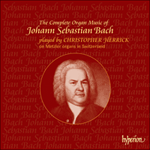 Bach: The Complete Organ Works Bach: The Complete Organ Works‘Let me say without hesitation that Herrick’s performances are models of clarity, accuracy, precision and musicality … this is a complete Bach th ... ‘Herrick is one of the few organists who does justice to these difficult, elusive pieces … What a singular joy to hear the organ played with such ...» More |
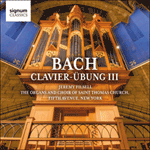 Bach: Clavier-Übung III Bach: Clavier-Übung IIIJeremy Filsell (organ), The Saint Thomas Choir of Men and Boys, Fifth Avenue, New York, Jeremy Filsell (conductor) Comprising twenty-one chorale preludes as well as the four duets, and opening and closing with the mighty 'St Anne' Prelude and Fugue, the third book of Bach's 'Clavier-Übung' is so much more than its somewhat prosaic title ('Keyboard Practice') m ...» More |
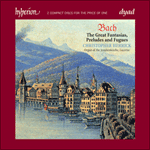 Bach: Great Fantasias, Preludes & Fugues Bach: Great Fantasias, Preludes & Fugues‘Herrick's musical inspiration, matched by his technique, does full justice to this pinnacle of the organ repertoire’ (BBC Music Magazine Top 1000 CDs ... ‘Yet another yardstick release from what seems to be an unbeatable team … I suspect I have already found my record of the year’ (Gramophone)» More |
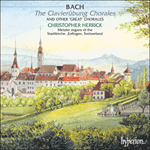 Bach: The Clavierübung Chorales & other great chorales Bach: The Clavierübung Chorales & other great chorales‘This set marks a significant addition to the Christopher Herrick Bach archive and is a further manifestation of the happy collaboration between the a ... ‘Hugely rewarding playing of the highest order’ (The Scotsman)» More |
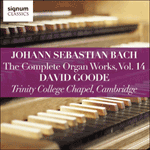 Bach: The Complete Organ Works, Vol. 14 Bach: The Complete Organ Works, Vol. 14This album presents the complete Clavierübung III of 1739. In many ways the crowning achievement of his organ works, Bach's compositional ingenuity is here unleashed on twenty-one Lutheran chorales in the first collection he prepared for publicati ...» More |

